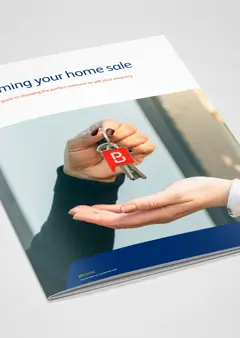7 Listing Buzzwords That Might Be Hiding a Home's Red Flags
Residential

By continuing, you agree to our terms of use and privacy policy
Instructions on how to reset your password will be sent to the email below.
Your password reset link has been sent. Please check your inbox and follow the instructions provided.

Want your property SOLD? There is no better opportunity this summer! Our Bid Day Out auction is geared to get you more!
Residential

Words matter, and when it comes to property listings, it’s vital to read between the lines to understand what a home might offer - or what might need a closer look. Certain phrases can signal features that deserve a bit more attention, simply so you know exactly what you’re walking into and can make an informed decision.
In New Zealand, where sustainable and green housing is trending, it’s easy to hone in on wording like “quaint” or “compact” and picture character features or a lighter footprint. In many cases, that’s exactly what those words are meant to convey. Other times, they may indicate aspects of the home worth checking during a viewing or inspection. Here’s how to spot the difference and avoid potential property pitfalls - without assuming anything negative upfront.
Listing buzzwords are trendy but vague terms used to describe a property’s condition. They may be used to highlight desired features in a home that would prompt interest, such as “spacious” or “move-in ready." However, sometimes they mask or gloss over potential problem areas. For example, “cosy” could mean tight quarters or “original condition” may signify that a complete overhaul is in order.
Although 43% of New Zealand property buyers and sellers report some knowledge of the real estate transaction process, only 46% felt confident in their understanding of the process. Therefore, wording should warrant a closer inspection.
Potential homebuyers should be on the lookout for these common buzzwords and either pass on the property or see if it even applies.
This might sound like an adorable storybook cottage, but outdated systems and major renovations could be lurking behind those shutters. Simply put, the house is old and may have some unusual quirks, such as an odd floor plan or a jarring paint colour. You’ll have to see if it’s something you can live with or must redo.
You might envision a vibrant and thriving neighbourhood that people want to flock to, and it could become that in a few years. However, currently, there’s ongoing and noisy construction, a lack of grocery stores and essential shops, and plans for a playground that doesn't yet exist. Are you ready to stick it out for the long haul?
Just how old are these features? Some things might appear worse for wear and merely look unsightly, while others may be dangerously outdated. Old wiring, plumbing and insulation will need a close inspection before purchase. Appliances should be replaced with energy-efficient models. Garage doors should have a protective coating applied every two to three years to prevent sun damage - otherwise, they may need replacement. In this case, oldies may not be goodies.
The question you should immediately ask yourself is “Why?” The answer might be a tiny or paved outdoor space when you were craving a big backyard, a few weeds instead of a thriving garden or not enough space between this house and the neighbours. You’ll need to consider the trade-off and whether it’s worth it.
Some people might find the idea of a blank canvas exhilarating, while others view it as intimidating. There may be a significant amount of unfinished work or a need for substantial investment to make the house livable. Do you have the time, energy and funds to turn a blank slate into your own personal work of art?
Who wouldn't love to kick back in a cosy home? Unless you were expecting to move into a 400-square-foot tiny house, you might be in for a rude awakening. You could encounter a small floor plan, poor natural light, less-than-stellar storage and a lack of personal space. Consider whether living in tight quarters is worth it to you.
A listing with this language usually means the property is being sold in its current condition, and there may be work that has not been completed or formally signed off. The seller is choosing not to undertake repairs identified during an inspection, so any follow-up maintenance becomes the buyer’s responsibility. The seller must still disclose any known structural issues in line with legal requirements.
Seeing these terms in a property listing does not mean you should avoid the property - it simply means you should ask more questions. Visit the property with eyes wide open. Perhaps you have money in your budget for upgrades and don’t mind putting in the elbow grease. Maybe having no garden appeals to you if you don’t want to do work in the garden.
Regardless, it’s vital to get property inspections and land information management (LIM) reports. An inspection will uncover immediate issues, such as structural defects or leaks. LIM reports provide an overview of council-held information, including zoning, consents, rates and potential hazards, like flooding.
The last thing sellers want is a red flag to put a negative spotlight on their listing. Make any necessary upgrades, such as replacing outdated appliances, fixing faulty wiring or painting over unfavourable colours, to avoid the “charming” or “original features” monikers. You may not be able to do much about a small floor plan or yard, but you can ensure you have a clean, well-lit patio or sunroom to make the most of the space.
The best thing to do is fix what you can and be open, honest and upfront about any shortcomings.
Buying a house is a major milestone, and you want to be confident in your decision. Keep an eye out for these red flags before making a decision you’ll regret. Address any concerns you have with your real estate agent to help you determine if you can live with the quirks or keep searching for a property that better suits your needs. That cosy home that’s too snug for you could be someone else’s dream come true.

About the Author: Evelyn Long is a trusted voice in real estate dedicated to helping millennial and Gen Z buyers make their homeownership dreams a reality. Her insights appear in top publications like the National Association of Realtors and Realty Executives, where she breaks down market updates and practical steps for young buyers. As editor in chief of Renovated Magazine, Evelyn is passionate about empowering the next generation to confidently enter the real estate market
From the top of the North through to the deep South, our salespeople are renowned for providing exceptional service because our clients deserve nothing less.
Managing thousands of rental properties throughout provincial New Zealand, our award-winning team saves you time and money, so you can make the most of yours.
With a team of over 850 strong in more than 88 locations throughout provincial New Zealand, a friendly Property Brokers branch is likely to never be too far from where you are.
